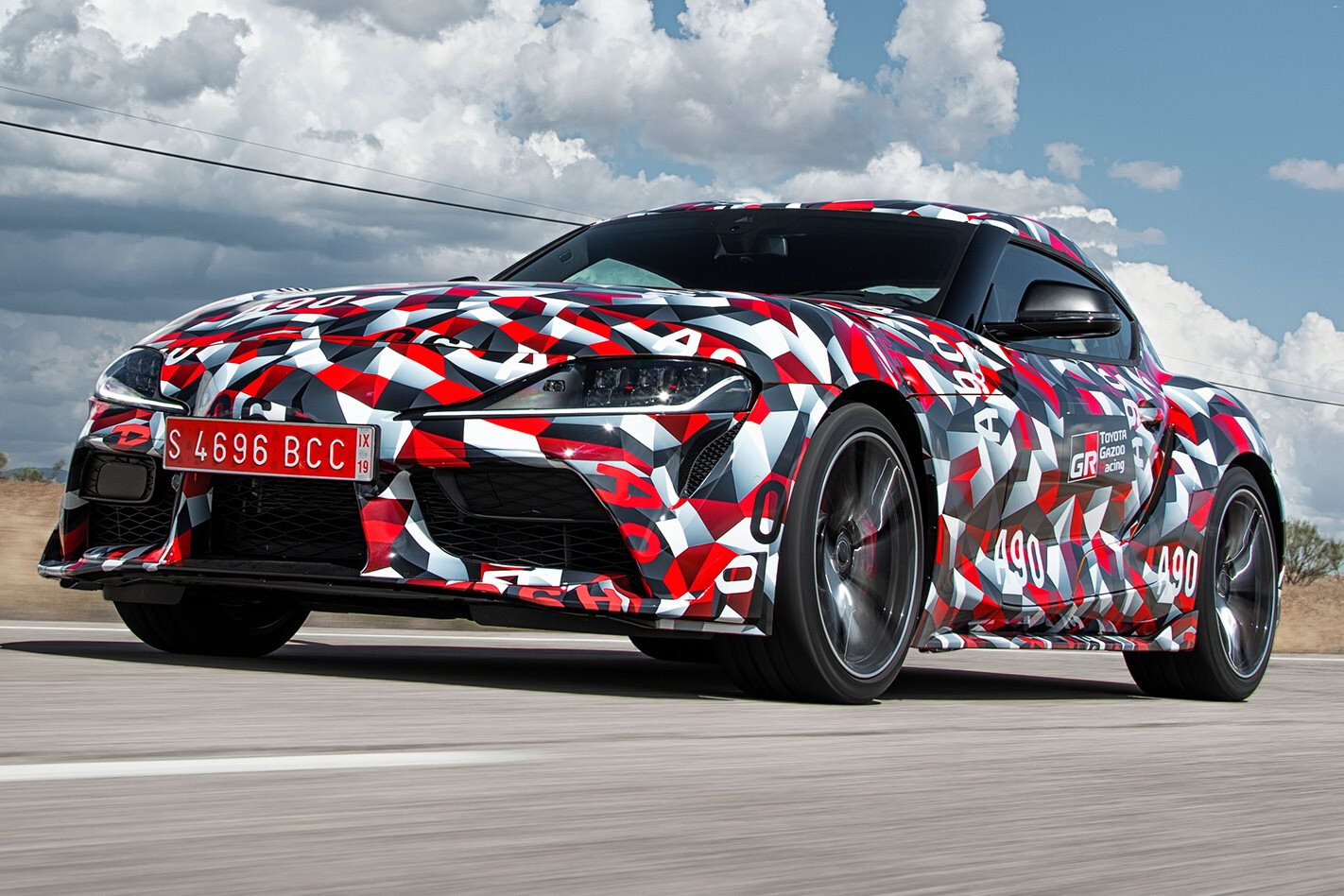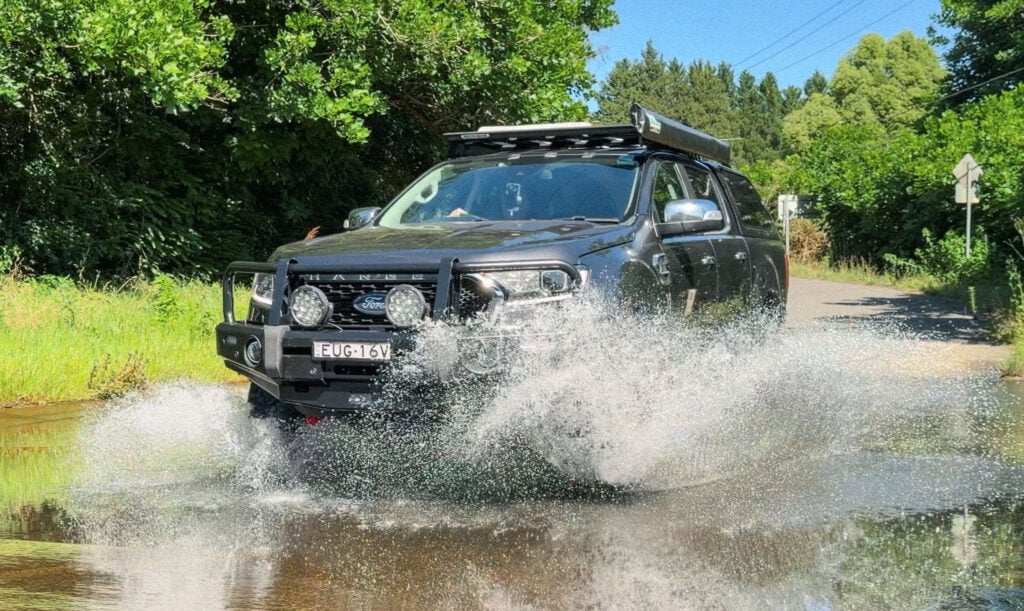WHAT IS IT?
This is the imminent return of a Japanese performance car icon. The fifth-gen Supra won’t launch until next year, but a pre-production prototype drive finally offered us a preliminary taste of Toyota’s flagship sports coupe, which has been in development for more than six years.
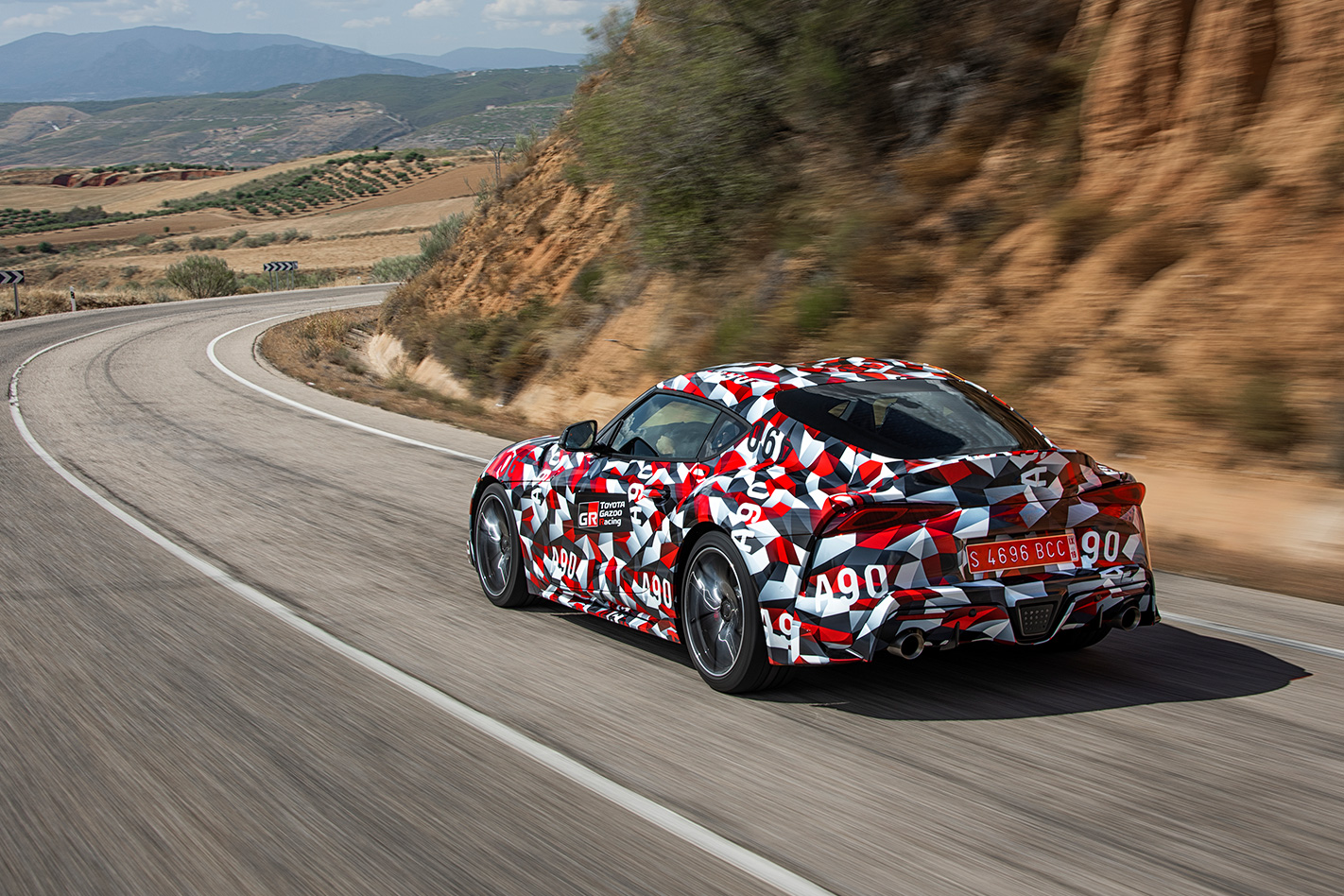
WHY WE’RE TESTING IT
The Supra nameplate is worshipped by the console generation, leaving this new one with huge boots to fill. A deal with BMW was needed to make its return possible for Toyota, but is a Japanese-German cross built in Austria worthy of such a storied badge?
MAIN RIVALS
Audi TTS, BMW Z4 Roadster, BMW M240i, Ford Mustang, Nissan 370Z Nismo, Porsche Cayman
THE WHEELS REVIEW
IT’S EARLY in 2012, at a racetrack on the outskirts of Madrid. Toyota is in the middle of launching an all-new, fun-loving coupe called the 86, when its chief engineer is interrupted by a phone call from HQ and ordered to drop everything. Another sports car project, in collaboration with BMW, has just been green-lighted, and it’s Tetsuya Tada’s job to take point.
Six years of gestation later and Tada-san is back at the Jarama circuit in Spain on a bright Autumn afternoon. This time around he’s armed with prototypes of the long-awaited fifth-generation Toyota Supra, and in a few moments I’m going to drive it.
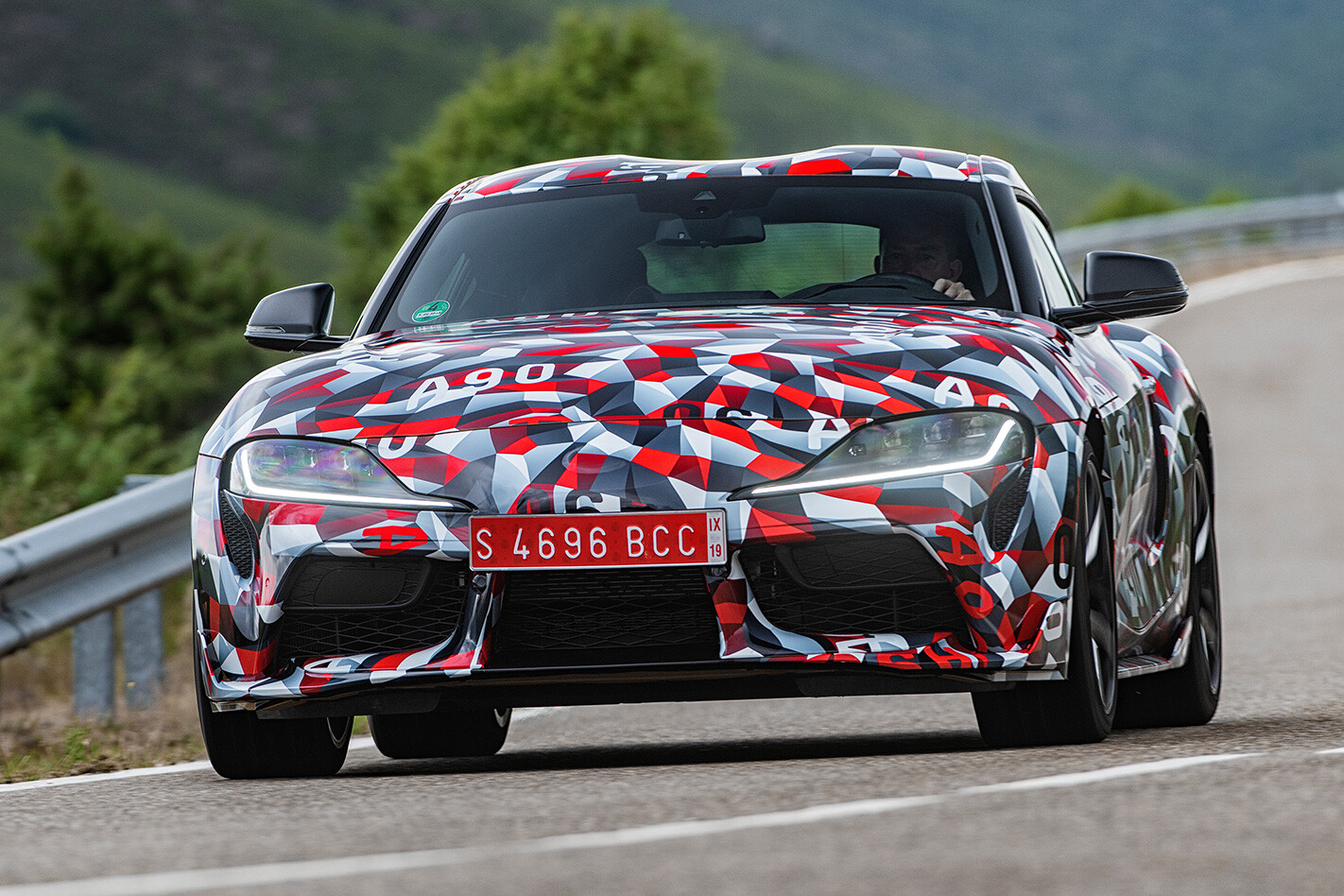
It’s still hard to believe this is happening, especially after such a protracted period of rumour and speculation. Only eight of these pre-production vehicles are said to exist, and four of them are here, wrapped in thin camouflage barely disguising the details of their dramatic two-seater form. The bodywork is littered with blanked off cooling ducts and aero features that future-proof it for racing use. An enormous clamshell bonnet opens from halfway up the quarter panels, and its cab-rearward profile bears a distinct similarity to its fourth-gen predecessor, the JZA80, a car still idolised more than 16 years after its production ceased.
What’s instantly striking is how compact the Supra is; barely as long or high as an 86, it creates presence with its width and stance. Using plastic for the rear hatch and clever packaging solutions has given it an even lower centre of gravity and a shorter wheelbase than the boxer-engined 86. A ‘golden ratio’ of 1.6:1 (wheelbase to track width) was the target – a template set by the Porsche 911 – and Toyota’s engineers are proud to have surpassed that, packaging it at closer to 1.5:1 for even greater agility.
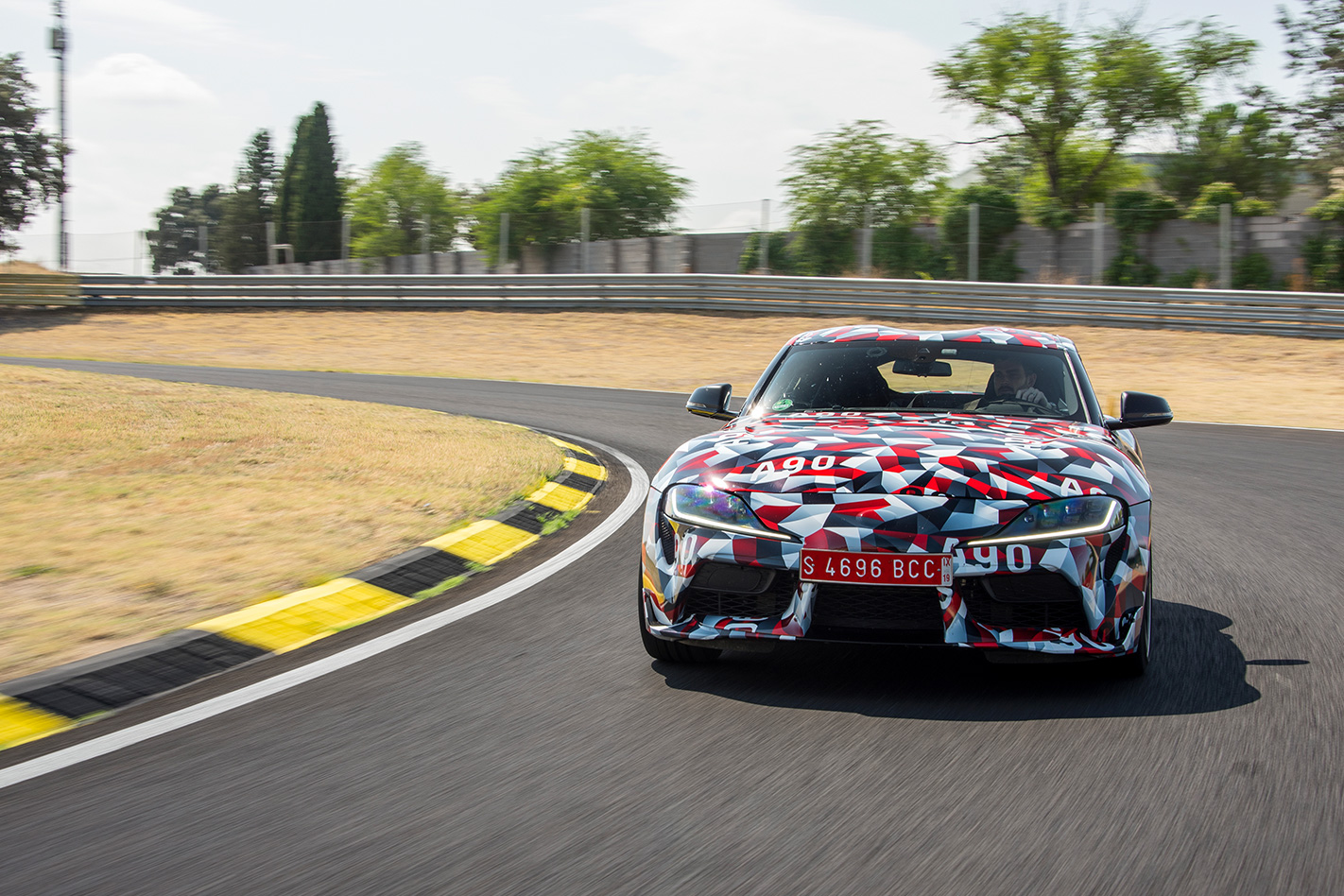
It sounds like a recipe for twitchy, snappy dynamics, but that’s simply not the case. On the road and on track the Supra is a joyfully cultured driving experience. Mechanical grip is massive, with clever aerodynamic measures that dial in high-speed stability and sticky Michelin Pilot Super Sport rubber in broad sizes of 275/35 at the rear and 255/35 front, on wide 19-inch wheels.
Direction changes are effortless, with crisp off-centre response and a linear feel to its steering, which makes it brilliantly intuitive as every input is rewarded with a proportional outcome. There’s an alert and playful character to it, but it doesn’t overstep to become hyperactive or nervous. Even on the circuit, the Supra feels friendly and communicative in a way that encourages confident driving.
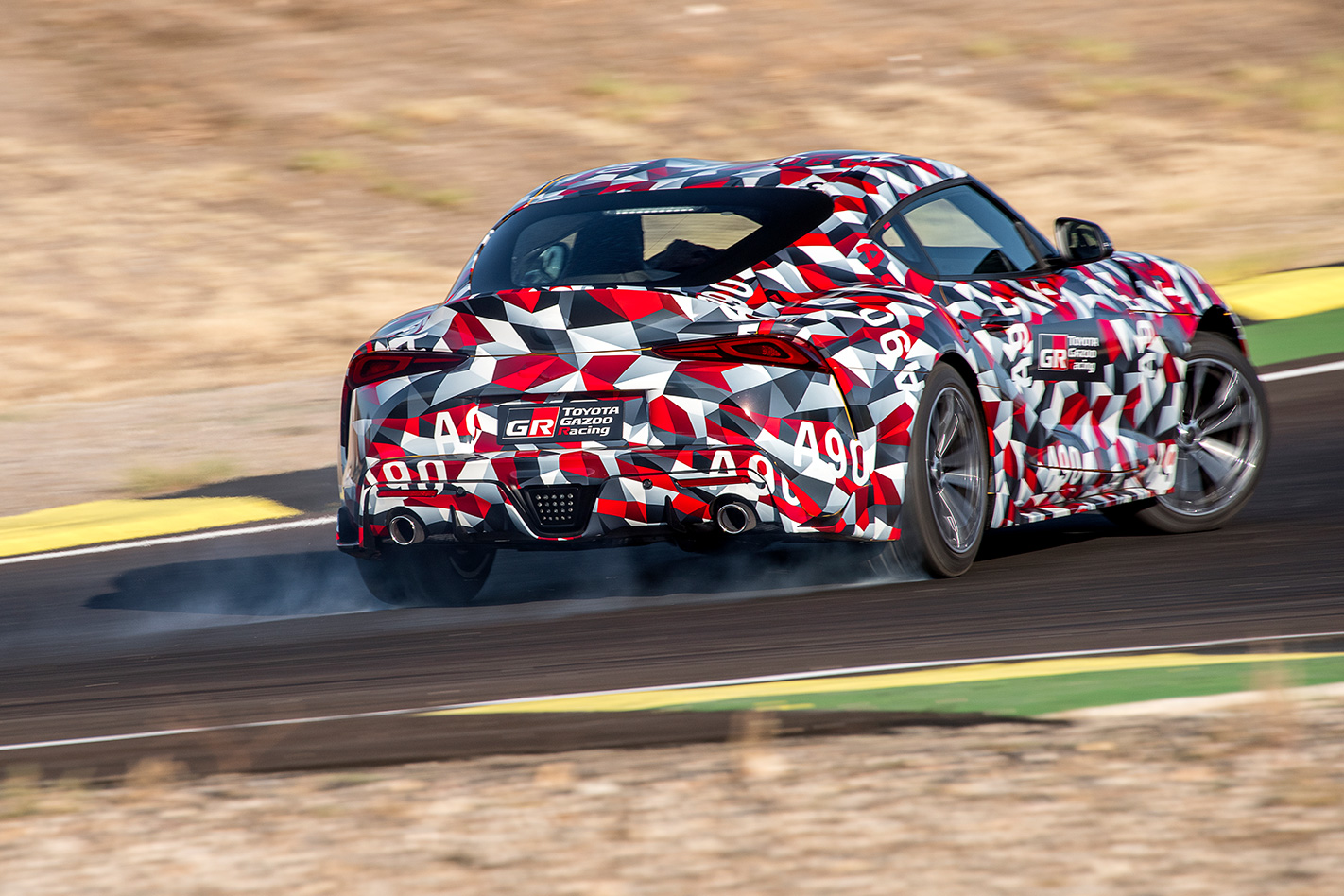
Around the fast, downhill right-hander onto Jarama’s main straight the Supra is hugely exciting. Its poise comes in part from an engine that sits entirely within the wheelbase of the car, meaning the front axle crosses forward of it in a front-mid layout. This helps achieve its perfect 50:50 weight distribution. What’s more, modern construction methods mean the Supra’s steel and aluminium composite body structure is in fact more rigid than that of the carbonfibre LFA supercar from 2010.
Toyota worked with BMW for two years on the basics of this shared platform, which also underpins the Z4 Roadster. The Japanese brand was able to influence important mounting points and the location of major components – including the driver – to suit the Supra’s intent and its design, which was worked on in Munich during the initial phase by stylists from Japan. An existing BMW architecture was the starting point, one compatible with Toyota’s desired power source; a turbocharged 3.0-litre in-line six-cylinder codenamed B58, as found in the M240i and the new Z4 in 250kW/500Nm trim. Without a straight six, it wouldn’t be a Supra, and without BMW, Toyota says the project simply would not have happened.

Supra’s outputs are yet to be confirmed, though they’re likely to be similar to those above. Toyota has taken the same hardware but developed its own tune for the powertrain, including the eight-speed automatic gearbox from ZF, which will get a launch control mode that is still being finalised. Toyota engineers say the Supra is on track to hit a target weight of 1500kg, which should mean 0-100km/h acceleration in about 4.5 seconds.
The muscular six-cylinder engine revs to almost 7000rpm, boasting a thick torque band that starts low in the rev-range with a lusty induction spool and velvety exhaust note in keeping with the Supra’s heritage. European models need a particulate filter in the exhaust to meet emissions regulations, and suffer from a suppressed soundtrack as a result. Other markets, including Australia, will welcome a more vocal set of pipes when the Supra reaches showrooms late next year, though whether or not that means doing away with a sound synthesiser that adds fake noise through the speakers in European versions is unknown.
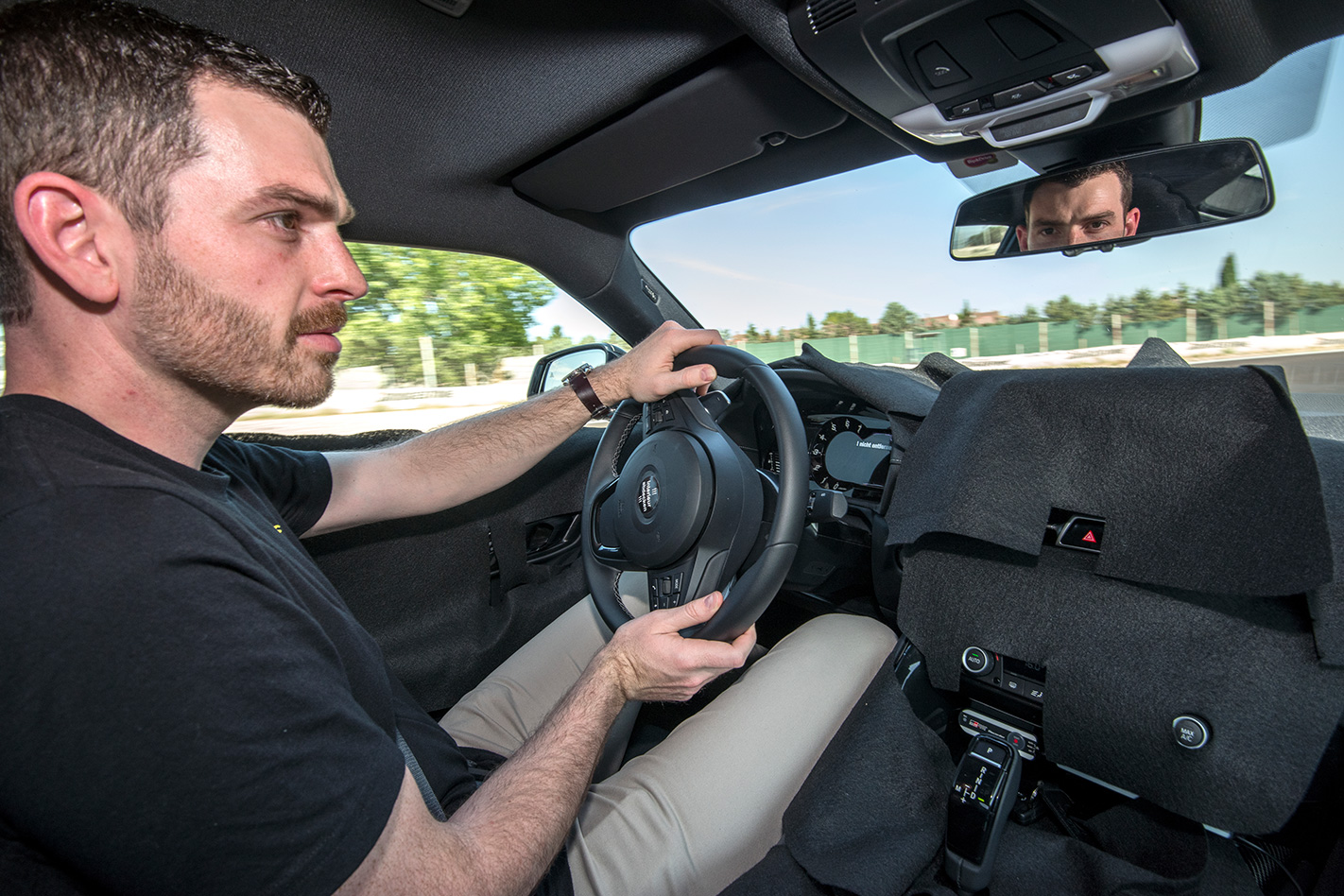
There are two available drive modes for Supra: Normal and Sport, and setting the ESC to off really means off. Sport mode sharpens throttle response, adds weight to the steering, tightens up the adaptive dampers, intensifies pops and crackles at the tailpipe, and switches to a gearbox calibration that is impeccable on track. A full manual mode is available, though downshifts from the slightly dull paddle shifter are sometimes delayed or ignored if requested with too narrow a buffer to redline.
A six-speed manual ‘box exists in the BMW portfolio linked to this engine, but that transmission option is not yet confirmed for Supra. A greater focus has been put on the buying habits of major markets, such as North America, which means the eight-speed needed to happen first.
A ‘go where the customer goes’ philosophy has seen 90 percent of Supra’s development take place on public roads rather than racetracks. A downside of that is its four-piston Brembo braking package, which showed signs of stress after a number of laps on track, but that won’t be of concern for most buyers. Braking modulation and performance at regular road speeds is impressive.
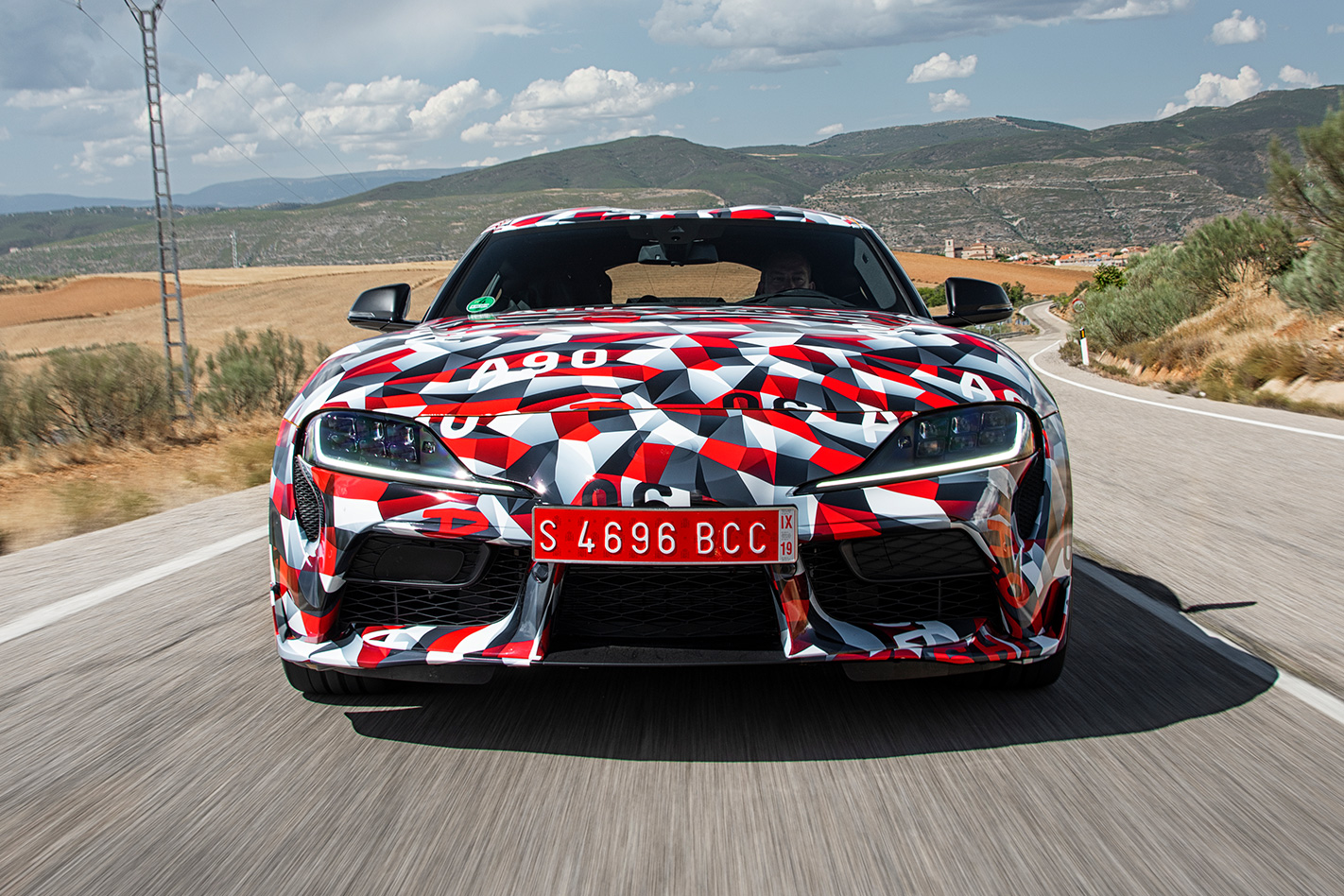
What’s surprising is how suave the Supra feels as a long distance cruiser. Ride quality is excellent, with a supple initial bump absorption and tightly controlled rebound. Toyota admits the tune of its 7mm lower adaptive suspension package is still receiving tweaks for production, but the early signs are positive. Even boot space is reasonable at about 250-litres. There’s no cargo barrier behind the two front seats, but cabin noise is cleverly suppressed for a sports car such as this, and certainly when compared to an 86.
Toyota says these prototypes are 95 percent representative of the finished product. They’re complete from a hardware perspective, but there’s an array of electronic revisions to be made before the deadline for final sign-off at the end of this year, mere weeks before production starts.
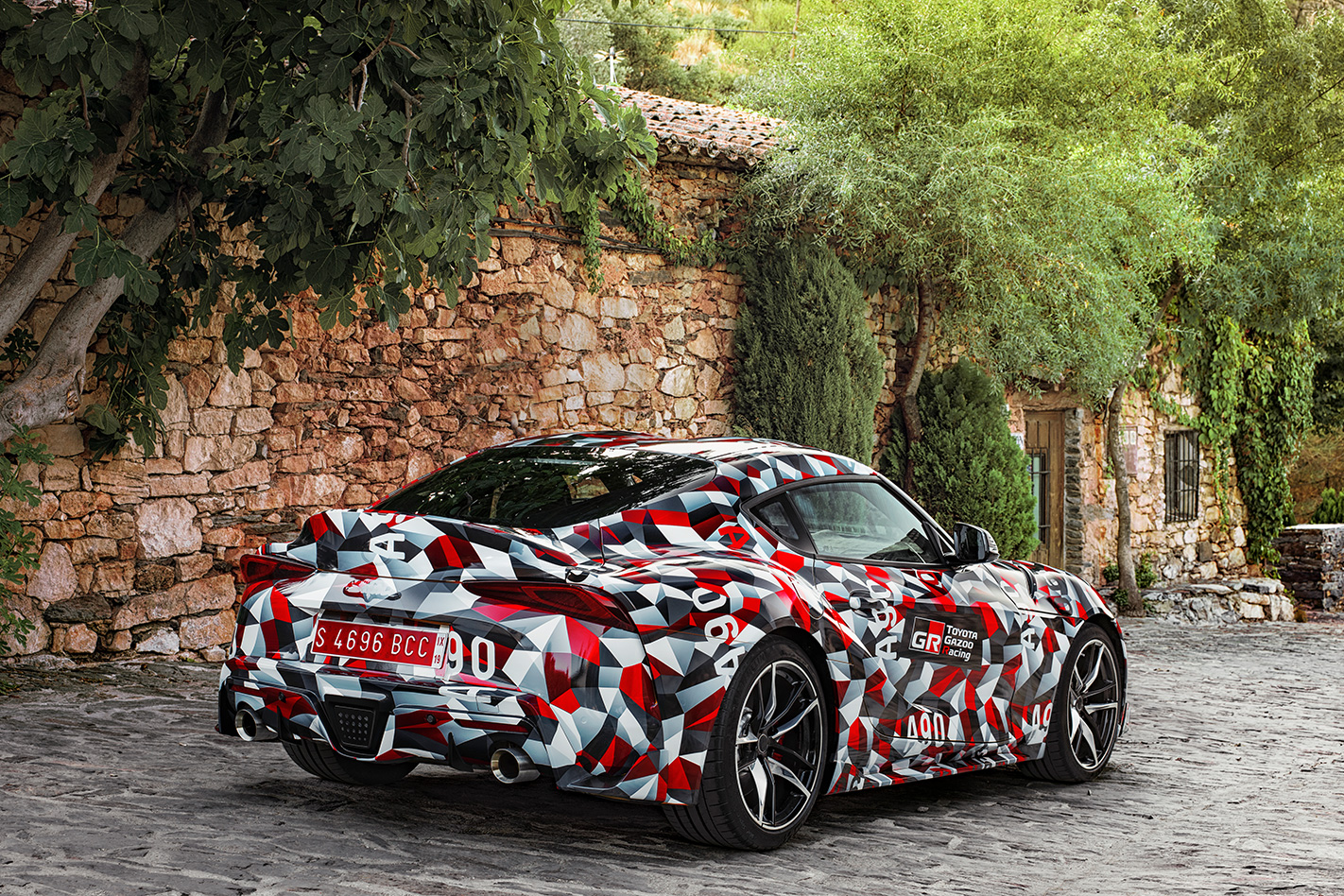
A big part of that work will be reskinning BMW’s infotainment system to look less like its German cousin. The intimate cabin, though covered by black felt in these prototypes, is clearly an amalgam from BMW’s parts bin, including familiar climate control buttons, carbonfibre trim, a joystick-style shifter, iDrive controller and widescreen display mounted high on the dashboard, though it should be noted it is not the same interior as the Z4 Roadster. Bespoke trim and switchgear would bring costs that Toyota deemed not strictly necessary, so only a unique digital instrument cluster featuring a large central tachometer is distinctively Toyota.
The rev-counter is visible through a steering wheel that has the smallest rim diameter Toyota could specify using the BMW bits available to it, and a slimmer profile than anything found in Munich with carefully shaped thumb cut-outs for fingertip precision. The driving position is generously adjustable within a narrow space, nestling the driver into a slim yet comfortable seat that puts all primary controls within natural reach. The short turret faces a shallow, letterbox windscreen, with side window glass that barely reaches the eye-line of taller drivers, and broad C-pillars behind. It’s fine on the open road, but in town visibility could be tricky. A surround-view camera mode would help with that.
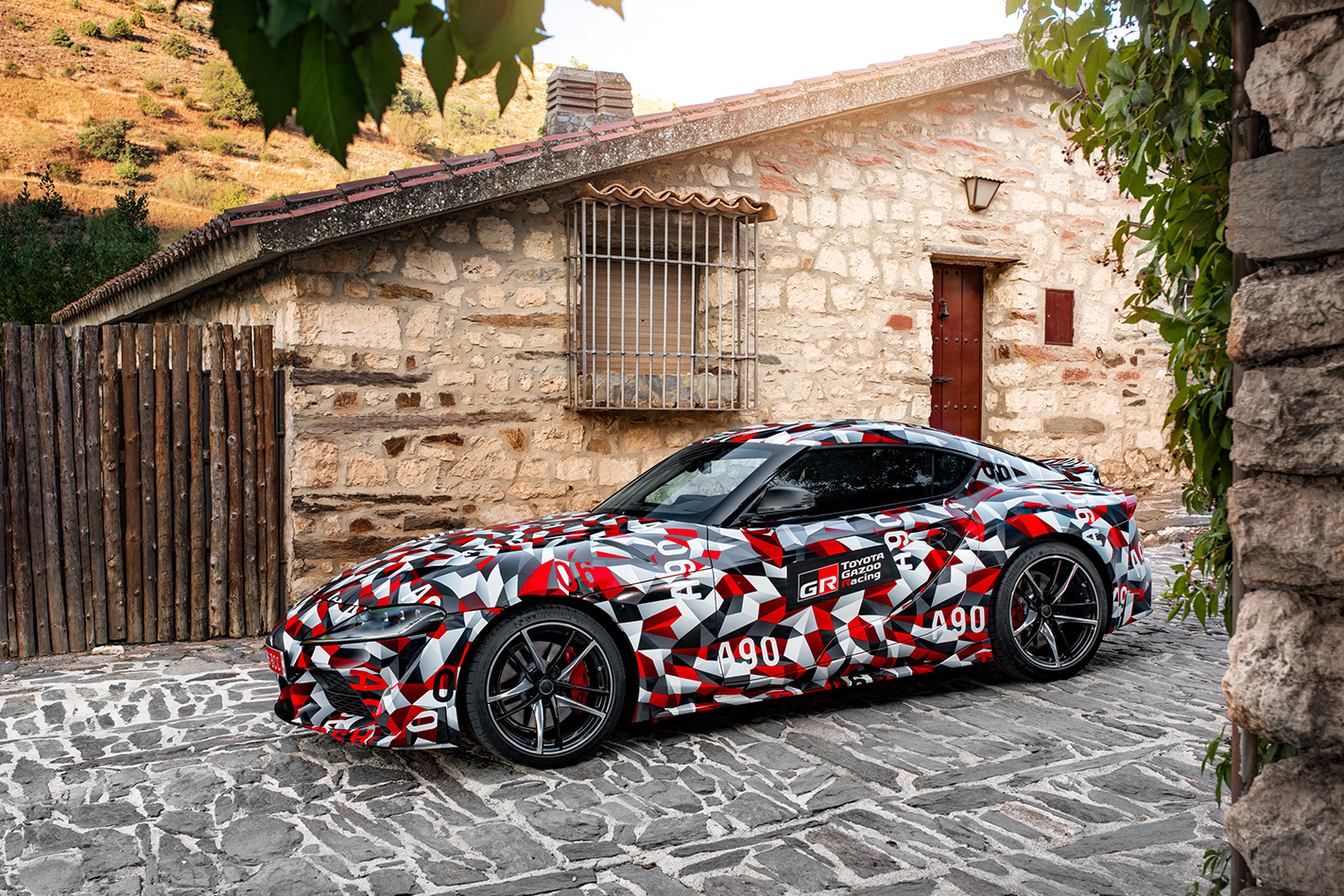
But features like that add cost, and the Supra’s price remains its biggest question mark at this stage. This will be the first car to bring the Gazoo Racing brand (GR for short) to Australia, badged as the Toyota GR Supra. Think of Gazoo Racing as the TRD of today, and you’re pretty much there. At the moment only one Supra variant is being talked about on the record, but expect entry-level and high-spec versions at launch – much like the 86 GT and GTS – with the fully featured Supra receiving the prototype’s adaptive dampers and a tricky active differential as standard. Somewhere around the $75,000 mark seems like a reasonable estimate at this point, but its arrival is still a long way off. A cheaper four-cylinder model is also on the cards.
There will be die-hard Toyota purists and detractors who take pleasure in criticising the half-caste Supra, but this coming together of two engineering-led automotive giants is shaping up to deliver a brilliant moment for modern sports cars.
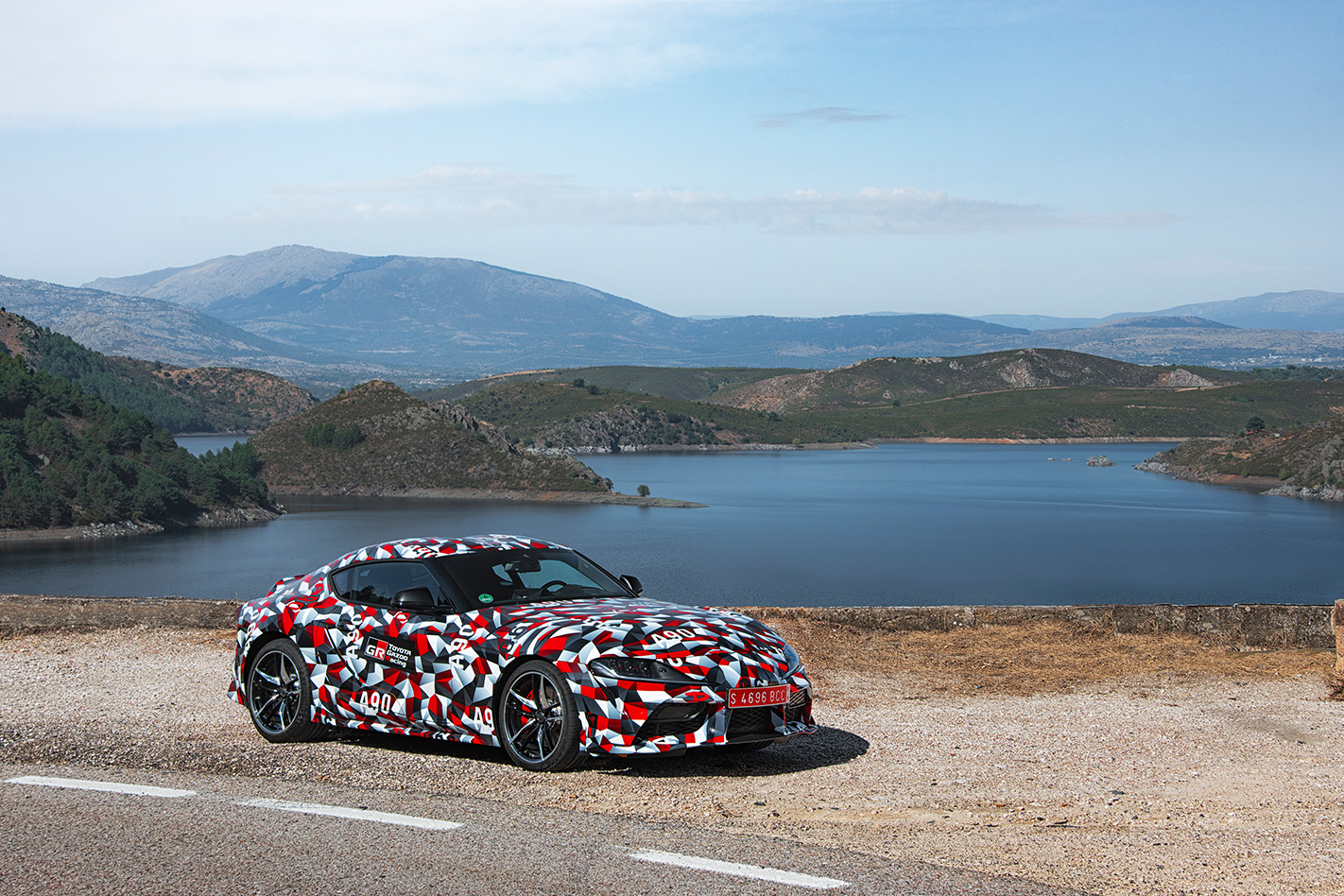
THE WHEELS VERDICT
An unexpectedly suave sports car with genuine grand tourer cred that plays a convincing double act as an occasional track toy. The prototype’s silken German drivetrain combined with its Japanese dynamic nous puts the all-new Supra in prime position to take two good things and make something great.
PLUS: Powertrain strength and slickness, steering precision, long-distance touring ability, dynamic sophistication MINUS: Lack of exhaust sound for prototypes, outward visibility around town, limits of brake package on track
SPECS
Model: 2019 Toyota GR Supra prototype Engine: 2998cc 6-cyl, dohc, 24v, turbo Max power: 250kW @ 5500rpm (estimated) Max torque: 500Nm @ 1500-4500rpm (estimated) Transmission: 8-speed automatic Weight: 1500kg (estimated) 0-100km/h: 4.5sec (estimated) Economy: 7.2L/100km (estimated) Price: $75,000 (estimated) On sale: Q4 2019

